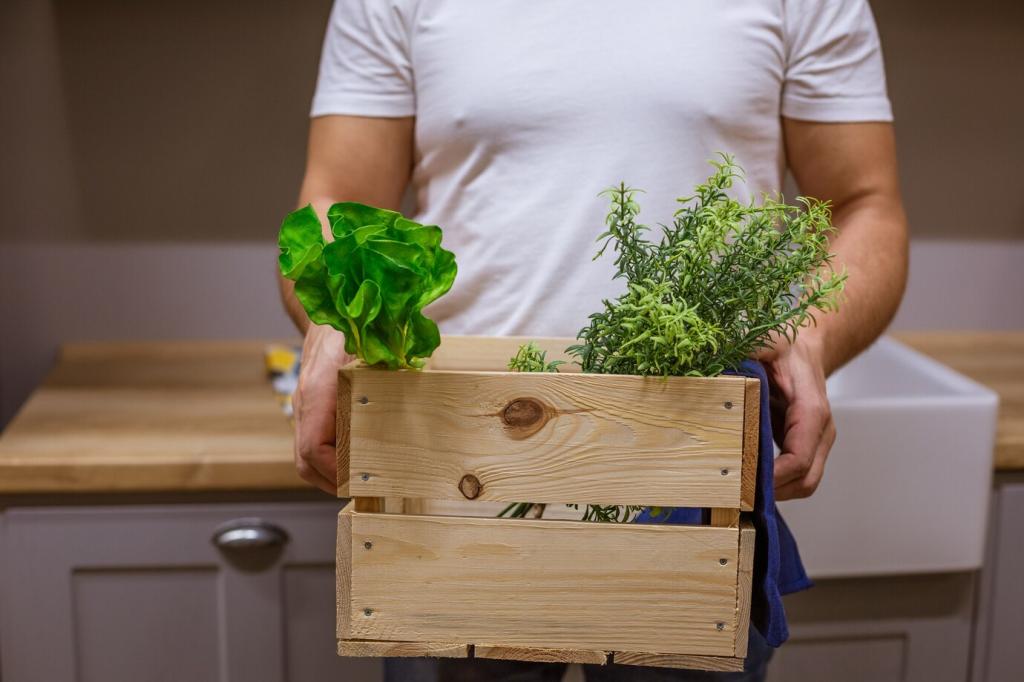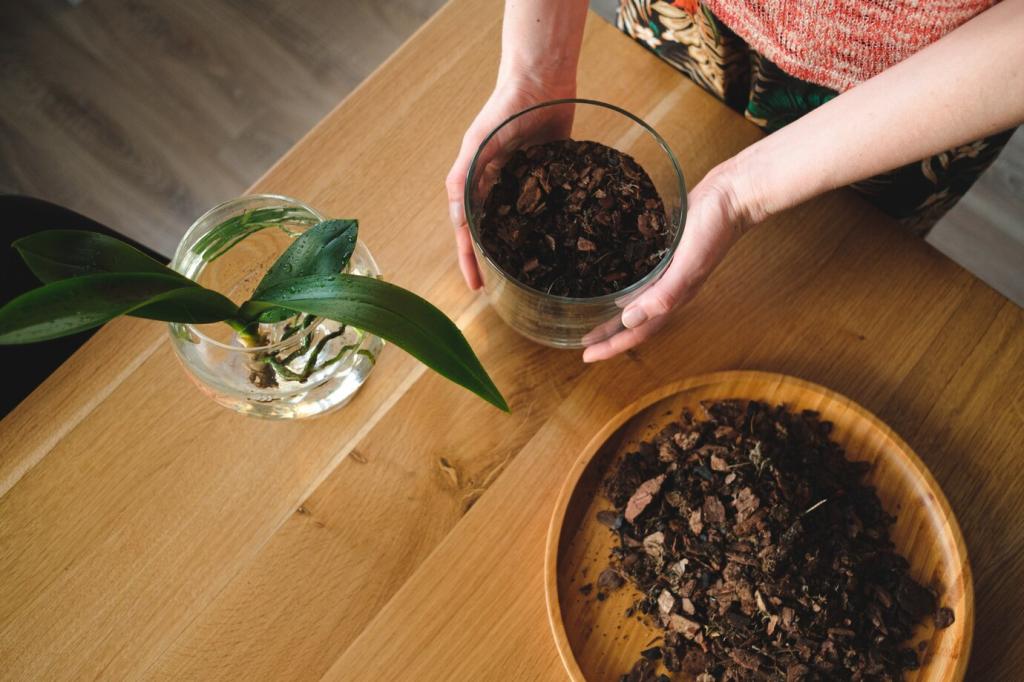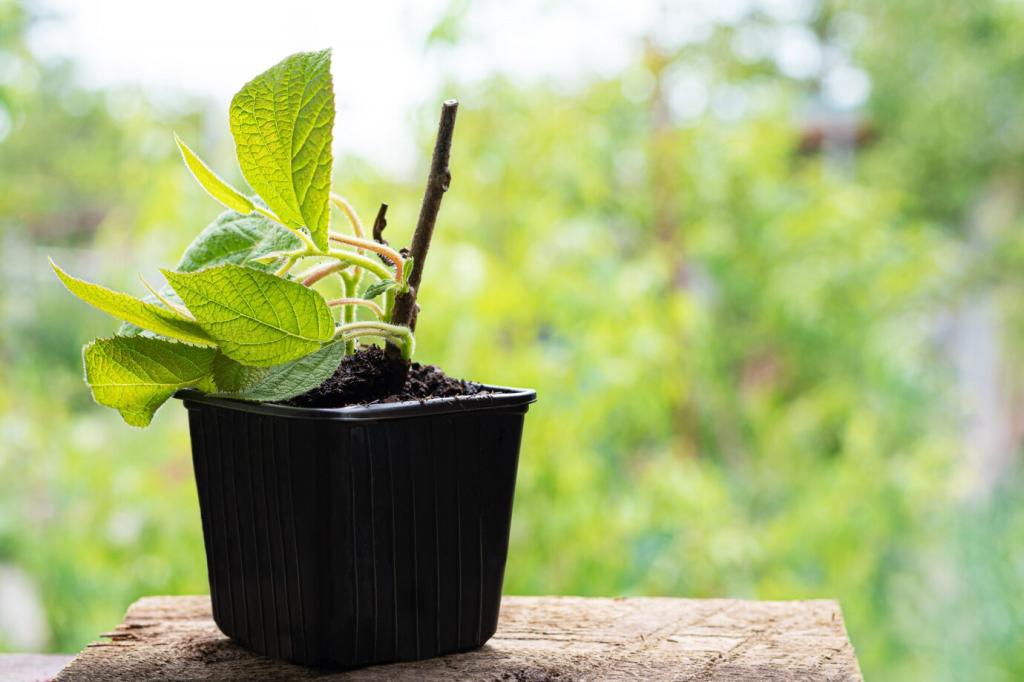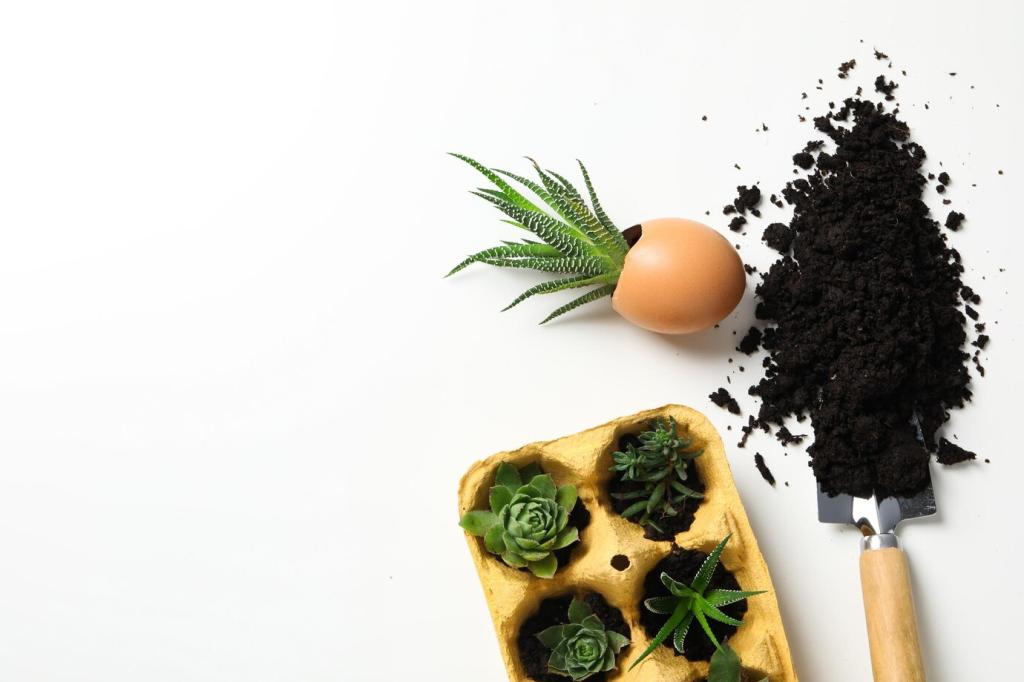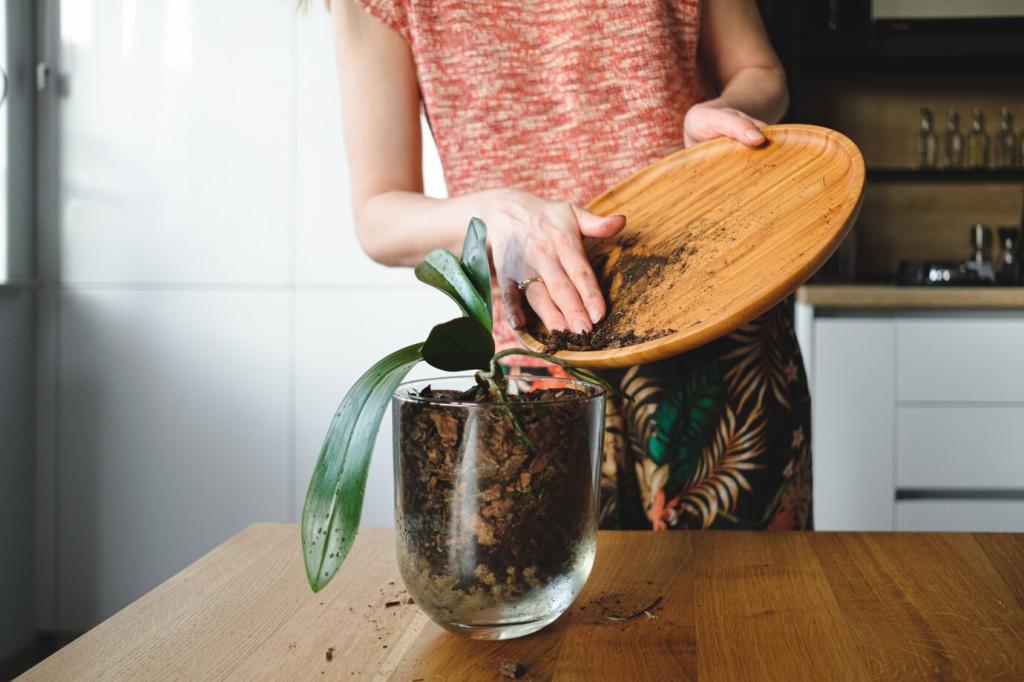Top-Dressing Magic for Container Vitality
Spread about one centimeter of finished compost across the surface of each pot, gently scratch it in, then water. This subtle layer invigorates microbes, moderates moisture, and boosts nutrient availability without overwhelming delicate balcony plants.
Top-Dressing Magic for Container Vitality
If last year’s potting mix looks flat and hydrophobic, fold in finished compost at roughly one part to four parts mix. The renewed structure improves drainage, water retention, and root exploration in a way bagged soil alone cannot match.

